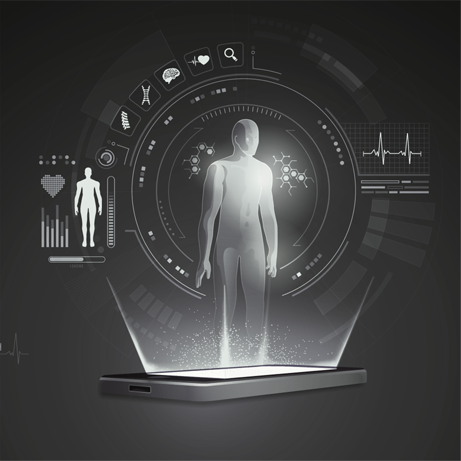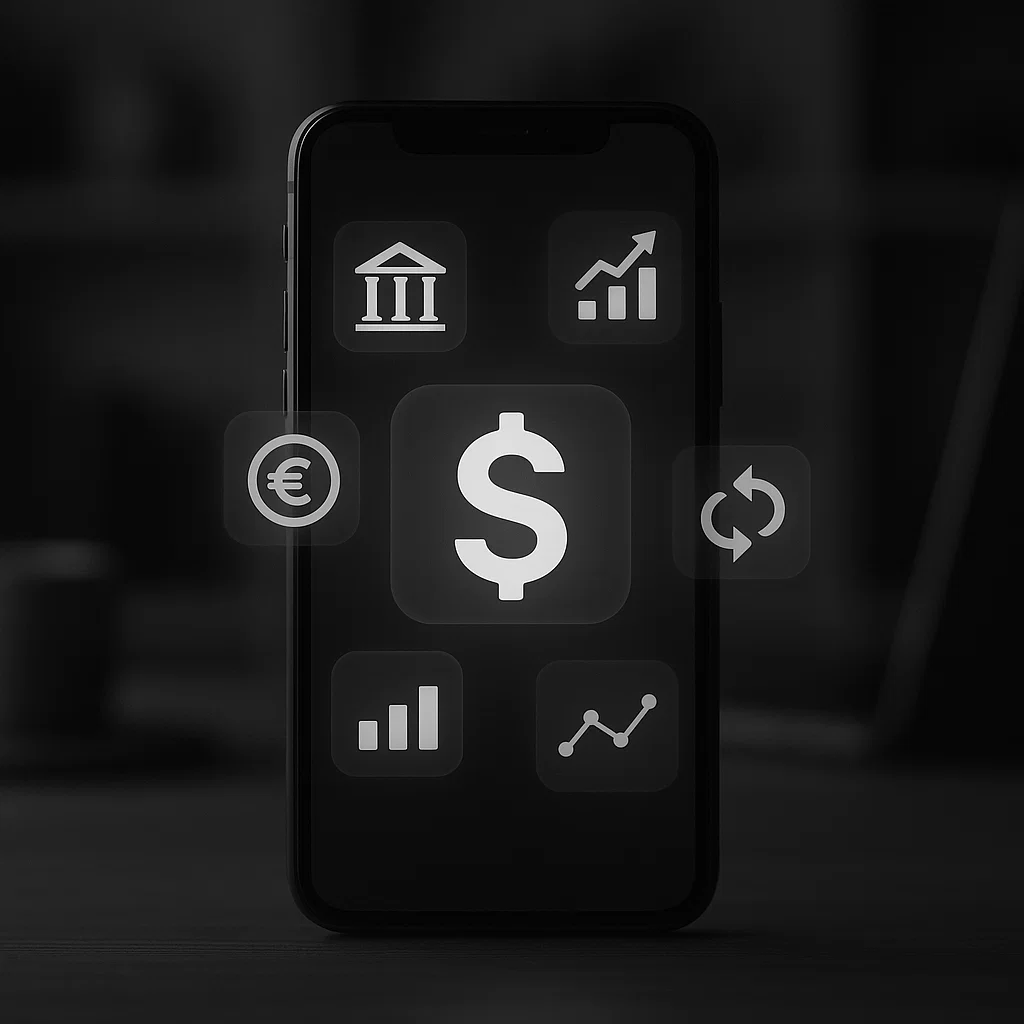



Legacy Software Modernization Services
Revamp Your Business with Cost-Effective Legacy Modernization Solutions
Your legacy system was once your competitive edge. Today, it’s holding you back. Every day your outdated software remains, opportunities slip away, money is wasted on patches and workarounds, and competitors who modernized years ago pull ahead.
At Acropolium, we understand the dilemma: you fear disrupting critical operations, yet your current system is quietly strangling growth. Your IT team spends 80% of their time keeping the lights on instead of driving innovation. And when you try to launch something new, your system often says, “not possible”.
But we know how to help you escape this trap. Our end-to-end legacy software modernization services do more than update technology – they unlock your business potential while preserving everything you’ve built.
Stop Letting Competitors Pull Ahead
Remember when your system was cutting-edge – when it gave you the flexibility to outpace bigger competitors and respond instantly to market changes? Today, that same system is still running, but buried under years of patches, workarounds, and accumulated technical debt.
The hard truth is that while you’ve been maintaining your aging infrastructure, your competitors have moved ahead. They’re releasing new features in weeks while your development cycles drag on for months. They’re scaling effortlessly while you’re hitting performance walls and losing your revenues.
But here’s the good news: it’s not too late to regain the advantage. The same business logic and institutional knowledge that make your outdated system challenging to replace are what makes it invaluable when properly modernized. At Acropolium, we don’t discard your competitive advantages – we amplify them with technology that works for you, not against you.
Your legacy system contains decades of refined business processes, hard-earned integrations, and deep industry knowledge. Our highly experienced developers know how to preserve all of this while delivering the speed, security, and scalability your business needs to be competitive on the market and innovate without limits.
modernizations
project duration
experience
Legacy System Modernization Services That Actually Solve Your Problems
As a top-rated legacy software modernization company, Acropolium has a proven expertise in seamless legacy modernization, which helps us to solve the business problems that are costing you customers, profit, and brand reputation.

Legacy Software Modernization
Outdated applications that crash, lag, and frustrate customers undermine your business credibility. At Acropolium, we deliver a full transformation that keeps critical business logic while eliminating reliability issues. As a result, you get a stable, high-performing system that reinforces your competitive position and restores operational confidence.

Legacy Code Modernization
A tangled mess of code that nobody understands, where fixing one thing breaks three others, and finding developers willing to work on it is nearly impossible? Our seasoned developers know how to replace it with clean, modern code that your team can actually maintain and enhance without getting frustrated.

Cloud Migration
Outdated infrastructure drains resources and blocks scalability. We execute seamless cloud migrations that significantly reduce costs and make your systems agile, secure, and cost-efficient, allowing your business to respond to opportunities without being constrained by physical hardware limitations. Scale instantly when you need it.

Application Re-engineering
When your system is beyond repair, incremental fixes fail. Acropolium rebuilds applications from the ground up without business interruption, by deploying the new system alongside the old until it’s fully operational. The result is a modern, reliable re-engineered app that fully reflects your business objectives and processes.

Software Re-architecting
Monolithic systems are hard to update, integrate, and scale. Every change requires touching the entire system, creating massive risk and delays. We implement modular, cutting-edge architectures that allow independent updates, rapid feature deployment, and safe integrations. Your business gains flexibility, speed, and control, turning legacy limitations into a platform for growth and competitive advantage.

Infrastructure Modernization
Aging servers and costly maintenance jeopardize operations. At Acropolium, we replace outdated infrastructure with reliable, scalable systems that actually cut costs and eliminate all possible server failure emergencies. Your IT environment becomes proactive, secure, and future-ready, ensuring uninterrupted operations and enabling your business to scale confidently.

API Upgrades
Disconnected systems waste time and restrict growth. We implement modern APIs that integrate your software across third-party tools, partners, and vendors. Manual processes disappear, data flows seamlessly, and your business gains the agility to innovate, automate, and expand without technological constraints.

Legacy Software Maintenance
Legacy systems require ongoing maintenance. Acropolium provides continuous support, proactive maintenance, and performance optimization for legacy applications, ensuring maximum stability and minimal risk. Our approach allows you to modernize systems gradually and strategically, extending their lifespan, maintain operational reliability and control over every stage of the transformation.
Why Clients Choose Our Legacy Modernization Services
Our reputation as a trusted legacy system modernization company is built on delivering real tangible results and exceptional service. We don’t just upgrade your outdated technology; we partner with you to achieve your business goals.
Enhanced Scalability and Flexibility
We build resilient, state-of-the-art architectures that scale effortlessly with your business demands, ensuring performance under any load. By eliminating system failures, downtime, and bottlenecks, Acropolium protects your revenue and reputation as well as enables you to capture every growth opportunity.
Improved Security and Compliance
We replace outdated security protocols with industry-leading standards, minimizing cyber risk and protecting your critical data. Built-in auditing, access controls, and compliance with GDPR, HIPAA, and ISO frameworks ensure your business operates securely, confidently, and in full regulatory alignment, turning modernization into a strategic advantage.
Cost-Effective Solutions
At Acropolium, we don’t just replace your outdated infrastructure - we transform it into your revenue-generating asset. Our best-in-the-industry solutions cut costs, reduce technical debt, and eliminate patchwork fixes that drain resources. By minimizing failures and maintenance overhead, we free your IT budget to fuel innovation, accelerate growth, and strengthen overall business performance.
Faster Time-to-Market
Our deployment cycles are measured in days, not months, giving you the agility to launch features faster than competitors and respond instantly to market demands. With speed and precision, you set the pace, shape industry trends, and position your business as the innovator others are forced to follow.
Better User Experience
Clunky, outdated systems frustrate both customers and employees, slowing adoption and damaging satisfaction. At Acropolium, we design intuitive, responsive, and visually engaging interfaces and smooth workflows that people actually want to use. By turning poor usability into seamless experiences, your software drives productivity, user engagement, and strengthens brand reputation.
Future-proof Technology Stack
You’re terrified that in five years you’ll be in the same position you’re in now – trapped by outdated technology? We know how to build highly scalable architectures for the future that evolve with technology trends. Your investment in legacy system modernization will deliver lasting ROI increasing in value over time as your systems continue to support growth and innovation.
Seamless Integration
Disconnected systems create inefficiency and errors. At Acropolium, we implement true integration across your entire tech stack, eliminating data silos and manual workarounds. All tools, platforms, and workflows operate in sync, maximizing operational efficiency and providing clear, actionable insights that help your business make smarter decisions and achieve lasting success.
Dedicated Support
We provide continuous monitoring, quick bug fixing, and ongoing updates to keep your systems stable. Modernize with confidence, knowing your operations won’t be disrupted. Your success is our success – we stay by your side every step of the way.
Industries We Are Transforming
Partnering with businesses globally, Acropolium's legacy modernization services cover diverse operational and technical needs, supporting innovation across diverse sectors.
Healthcare
- Migrate outdated patient record systems to modern, interoperable platforms for faster data exchange.
- Replace legacy modules with solutions aligned to HIPAA and GDPR standards, ensuring continuous regulatory adherence.
- Transform monolithic appointment systems into scalable, cloud-native services for virtual consultations.
- Embed real-time reporting and AI-powered insights to improve diagnosis workflows and resource planning.


Finance & Banking
- Replatform legacy transaction engines onto microservices, boosting processing speed and reliability.
- Implement zero-trust architectures and continuous threat monitoring to protect sensitive financial data.
- Re-engineer payment gateways for seamless mobile and web-based transactions.
- Automate compliance reporting and audit trails with up-to-date frameworks, reducing manual effort and errors.


Logistics & Transportation
- Replace rigid transportation-management systems with API-first, cloud-hosted platforms for dynamic routing.
- Modernize inventory and fulfillment modules to support real-time tracking and robotics integration.
- Upgrade legacy telematics to next-gen IoT solutions, unlocking predictive maintenance and uptime analytics.
- Redesign electronic data interchange flows for faster, more reliable partner integrations.


Retail & eCommerce
- Migrate legacy checkout systems to headless, omnichannel architectures for unified shopping experiences.
- Reconstruct stock management backends to support real-time sync across warehouses and storefronts.
- Integrate modern recommendation services via APIs, driving higher conversion and customer loyalty.
- Leverage serverless functions to handle peak-season traffic without performance degradation.


Manufacturing
- Rebuild Manufacturing Execution and ERP modules on modular, service-oriented platforms for agility.
- Retrofit legacy control systems with IoT sensors to create virtual replicas for process optimization.
- Transform batch-oriented data flows into real-time dashboards, improving demand forecasting and throughput.
- Replace manual QA checks with AI-driven inspection pipelines for faster defect detection.


Telecommunications
- Migrate operational support and billing systems to cloud-native microservices for improved uptime and feature delivery.
- Transition monolithic network management apps to virtualized functions for scalable deployments.
- Re-architect legacy control planes to support edge computing and ultra-low-latency services.
- Standardize and secure service-exposure APIs for partner integrations and third-party extensions.


Government & Public Sector
- Replatform legacy portals into user-centric, mobile-friendly interfaces that streamline public interactions.
- Lift and shift critical back-office systems to modern environments, reducing operational costs.
- Embed real-time monitoring and immutable logging to meet stringent public-sector regulations.
- Modernize ETL processes to securely share information across departments and jurisdictions.


Education & eLearning
- Convert outdated learning management systems into scalable, cloud-hosted platforms supporting virtual classrooms.
- Upgrade media servers and encoding pipelines for smooth, on-demand access to video lectures.
- Re-engineer SIS backends to handle large-scale enrollment, grading, and analytics tasks.
- Embed AI modules that personalize coursework based on performance data and learning patterns.


Legacy Modernization Solutions Portfolio
With our clients trusting us with complex system upgrades for years, we have an impressive track record of success stories where legacy modernization services show tangible results.


Get a free software project consultation
FAQ
- Why should I modernize my legacy system?
Why should I modernize my legacy system?
Because every day you don't is costing you money, customers, and competitive advantage. Your legacy system isn’t just “a little outdated” – it’s actively sabotaging your business success.
Think about what your system problems cost you last month. Server downtime that lost sales. Slow performance that frustrated customers. Security vulnerabilities that led to regulatory fines. Manual workarounds that wasted your team’s time. Integration failures that delayed important projects.
Now multiply that by 12 months, then by the next five years. That’s what keeping your legacy system will cost you; and that’s just the direct costs. The hidden costs are even worse: the opportunities you’ll miss, the customers who’ll leave for faster competitors, the talented employees who’ll quit rather than work with outdated technology.
Legacy modernization is an investment that pays for itself within the first year through reduced maintenance costs, improved efficiency, and new business opportunities your old system couldn’t handle. - How do I know if my software needs modernization?
How do I know if my software needs modernization?
Your system crashes regularly, takes forever to load, or can’t handle normal business volumes. You’re getting hacked or almost getting hacked frequently. You can’t find developers who know your technology, or the ones you have are constantly complaining. Simple changes take months to implement. You can’t integrate with modern tools and services. Your team spends more time on enhancements than actual work. Customers are complaining about your website or application performance. Your technology is more than 10 years old. Vendors are ending support for your platforms. Your competitors are launching features you can’t match. Your IT costs keep rising but your capabilities aren’t improving.
If you recognize more than one of these signs, you’re a strong candidate for outsourcing legacy system modernization service from a reputable company like Acropolium. - Do you provide simultaneous legacy software modernization services and new function development?
Do you provide simultaneous legacy software modernization services and new function development?
Absolutely. At Acropolium, our legacy system modernization services combine over 20 years of custom software development expertise with an agile, results-driven approach. We refactor and re-architect core modules while delivering new features incrementally, minimizing business disruption, reducing technical risk, and turning your legacy systems into a scalable, high-performance foundation for growth and innovation.
- How long does a legacy modernization project take?
How long does a legacy modernization project take?
The timeline for legacy modernization depends on your system’s complexity, scope of work, and data volume. Simple applications can be modernized in three to six months, while complex enterprise systems typically take twelve to eighteen months. You will start seeing improvements within the first month as critical issues such as crashes, security gaps, and performance problems are resolved. Over the following months, core functionality is modernized and new capabilities are added, transforming your system into a platform that supports growth. By the final phase, advanced features provide clear competitive advantages. Anyway, we'll provide a tailored timeline after an initial discovery phase.
- Is legacy IT system modernization cost-effective?
Is legacy IT system modernization cost-effective?
Most companies spend 60-80% of their IT budget just keeping legacy systems running. Add up your server costs, license fees, emergency fixes, manual workarounds, and lost productivity. Many companies discover they’re already spending more on maintaining their legacy system than modernization would cost. There are also hidden costs: missed sales due to system crashes, lost customers due to slowly loaded pages, delayed projects due to integration failures, and ruined brand reputation due to security incidents. And they often exceed the visible maintenance costs.
Most of our clients achieve positive ROI within 12 months, and the benefits compound every year after that. The companies that wait five years to modernize end up spending more than if they had modernized immediately – and they miss five years of competitive advantages. - Why choose Acropolium as your trusted legacy software modernization company?
Why choose Acropolium as your trusted legacy software modernization company?
At Acropolium, we don't just have technical skills; we understand the business reality of legacy modernization. We know you can’t afford downtime. We know you can’t risk losing data. We know you need to justify every dollar spent to your executives. That’s why we provide transparent communication, realistic timelines, and proven methodologies developed through years of successful projects. Contact us to see how we can boost performance of your legacy software or application.
- How do I get started with legacy modernization?
How do I get started with legacy modernization?
Simply reach out to our team for a complimentary assessment. We’ll first provide legacy system modernization consulting and analyze your current architecture. Then, our team will identify pain points and propose a phased roadmap that aligns with your budget and business objectives.



